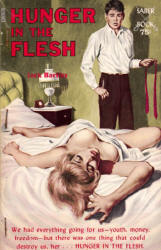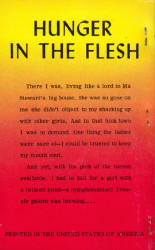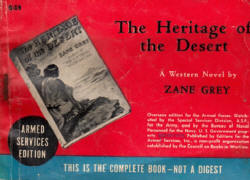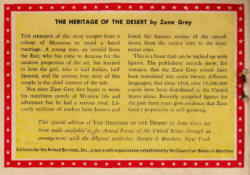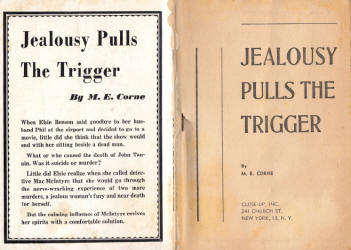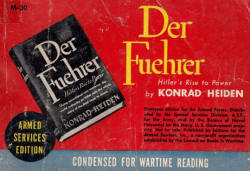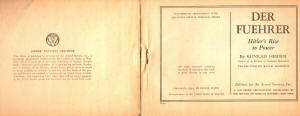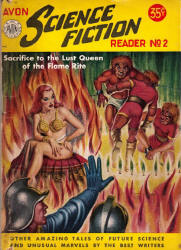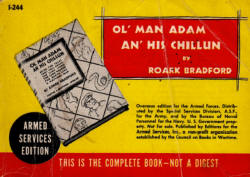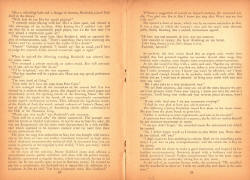|
How Staples Were Used in Some Older Paperback Books
|
||
|
Saber SA-99
ASE Q-19
Double Action Detective Novel Selection 3
ASE M-30
Avon Science Fiction Reader 2
ASE I-244
|
Before we get into the the "oddity" here, let's discuss how paperbacks are normally made. You can look this up online, or watch the process in a Youtube video. Routinely, the printed pages of books are folded and stacked together in small bundles (signatures). Since the pages were double or triple folded, they are still connected on multiple sides. In paperbacks, the finished page bundle is trimmed along the spine edge, which is then dipped into hot glue. Next, the wrapper (paperboard cover) is wrapped around the pages, then folded and pressed to give it a square spine. Finally, after the glue is dried, the other three edges are trimmed. (In a few cases, that trimming process wasn't exactly square. That may be the topic of another oddity.) Anyway, that's the way the VAST majority of paperbacks were made. To recap: Normally, staples ARE NOT used in binding paperback books.
In my collection, I've encountered three different types of stapling. I'll describe the oddest one first: industrial staples applied to an entire book AFTER it was wrapped in its cover. I'm not sure why that was done to Saber SA-99, but I am guessing that a problem was discovered with the gluing process after the book was completed. I've never seen this in any other Saber book. (In fact, I've never seen it any other mass market book, period.) It was somewhat common, however, in the production of the Armed Services Editions during World War II.
The next type of stapling method is like the first one, except the pages were stapled BEFORE the wrapper was glued to the book. I have encountered one early Avon Book that had a staple beneath the cover, but this style was a little more common in digest-sized volumes, like the one seen here. Once again, several Armed Services Editions used this style binding technique.
Finally, the most common type of staple binding is Saddle Stapling. While it was (and is) routinely used in the production of magazines, it was also used in the production of some vintage paperback books. In this case, the pages are arranged in pairs, the cover is set over it, and the staples are applied from the outside (cover) part of the stack into the center double-page sheet in the middle of the volume. Then, the whole book is folded in half and trimmed. That means the book's spine is not square, but rounded, as I've shown below. Like the first example, the heads of saddle staples are exposed, and they're much more likely to rust and discolor the books.
(Click any picture to view a larger image.)
|
|
